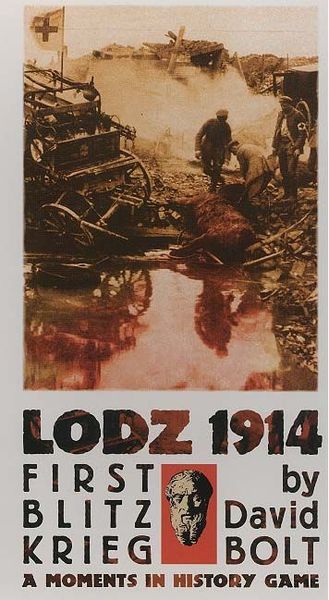Lodz 1914: First Blitzkrieg (1998) Board Game
Lodz 1914: First Blitzkrieg is a wargame that simulates the Battle of Lodz during World War I. The game focuses on the strategic maneuvers and combat tactics used by both the German and Russian forces during this historical conflict. Players take on the roles of military commanders, making decisions that will ultimately determine the outcome of the battle.
Game Components of Lodz 1914: First Blitzkrieg
How To Setup Lodz 1914: First Blitzkrieg
Setting up the game involves placing the mapsheet on the playing surface, organizing the counters and markers according to the scenario being played, and distributing the necessary components to each player. The rulebook provides detailed setup instructions to ensure players can quickly get into the game. The game can be played in either boxed, folio (poly-bag), or print-and-play (PnP) formats.
Gameplay Mechanics and Game Objective
The objective is to simulate the historical battle of Lodz, with the German Ninth Army aiming to prevent Russian forces from invading German Silesia, and the Russian forces seeking to break through German lines.
Player Experience
**Lodz 1914: First Blitzkrieg** is praised for its fluid gameplay and minimal fuss during movement and combat. Players appreciate the potential for significant swings in momentum, adding variety to each playthrough. The game is designed to make players feel like commanders rather than just players of a game system, with layered mechanics that enhance the gaming experience without unnecessary complexity.
Pros
Cons
Personal Thoughts on Lodz 1914: First Blitzkrieg
**Lodz 1914: First Blitzkrieg** is ideal for those who enjoy operational-level war games and are interested in World War I history. It is particularly suited for experienced gamers who appreciate historical accuracy and dynamic gameplay mechanics. For new players, it offers a challenging yet rewarding experience with minimal barriers to entry due to its well-designed ruleset. If you’re looking for a game that combines historical study with fun and engaging gameplay, **Lodz 1914: First Blitzkrieg** is definitely worth considering.
We are supported by our audience. When you purchase through links on our site, we may earn an affiliate commission, at no extra cost for you. Learn more.

